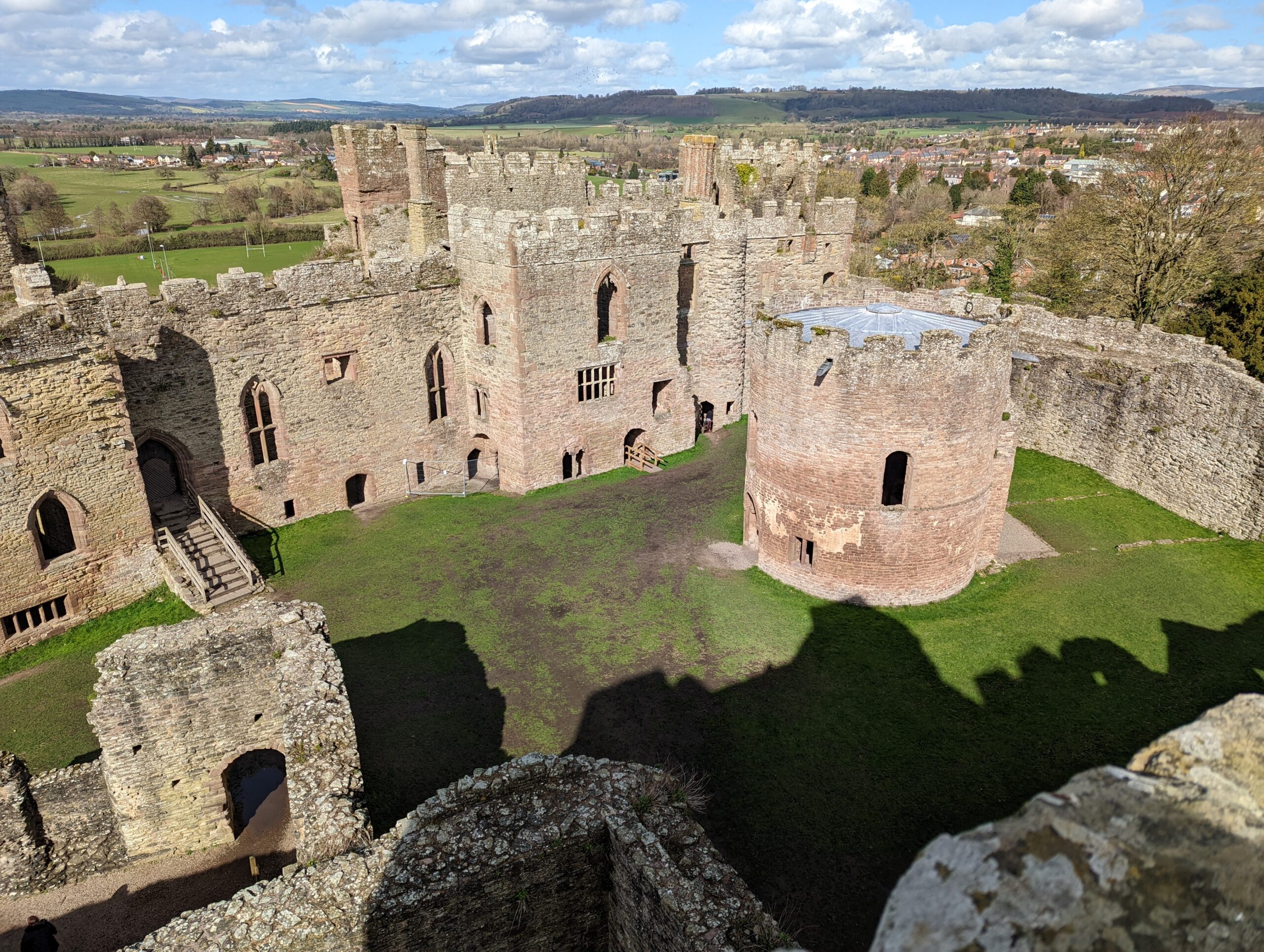The impressive ruins of Ludlow Castle stand proudly beside the River Teme in the Shropshire Town of Ludlow. The castle dates back to the Norman times when William the Conqueror invaded England and it is thought to be one of the first stone castles built in England. Click here to view our video on the history of Ludlow Castle
| Built | 11th Century |
| Materials | Siltstone & red sandstone |
| Condition | Ruins (extensive stone works remain) |
| Ownership | Earl of Powis |
| Access | Public – Fee |
The First Stone Castle of England
Ludlow Castle’s story began shortly after the Norman conquest. William FitzOsbern arrived in England during the Norman conquest and became Earl of Hereford. William quickly set about securing the Welsh border with a number of fortifications. Walter de Lacy was a trusted member of the FitzOsbern household and was granted various estates. In around 1086, Walter’s son, Roger de Lacy set about building Ludlow Castle (originally named Dinham Castle). The castle stood in the heart of the new estates and had a strong strategic advantage being above the river Teme on a flat topped ridge with steep rocky sides.
The castle was completed by 1115 and consisted of a stone ringwork with four towers, a gatehouse and a ditch on two sides dug out of rock. The rock that was excavated when creating the ditches was used for building the castle and thus making Ludlow castle likely the first stone castle in England.
In 1096, Roger de Lacy was accused of being part of a rebellion against William II and the castle was seized by the crown and given to his brother, Hugh de Lacy. Hugh had no children and the castle passed to his niece Sybil who married Pain FitzJohn. Following Pain’s death in 1137, there was much disagreement about who would inherit the castle. King Stephen chose to give the castle to Robert FitzMiles (who had been planning to marry Pain’s daughter) in return for Robert’s loyalty.
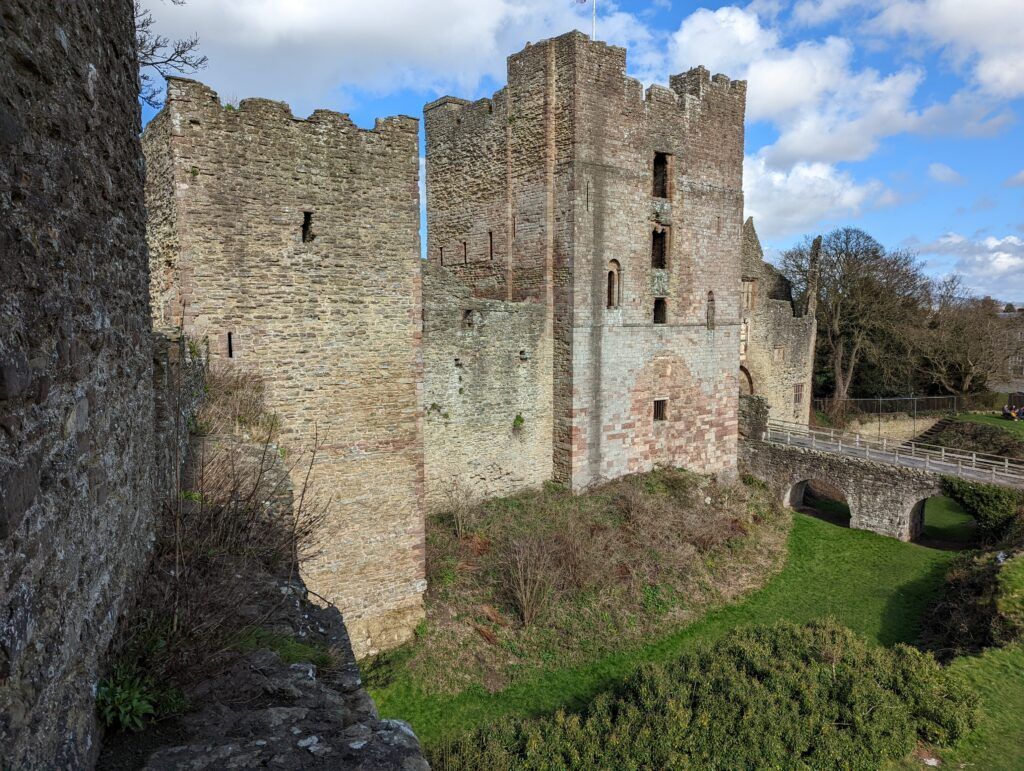
The Anarchy
When the civil war (Anarchy) broke out over the succession of the crown between King Stephen and Empress Matilda, Gilbert de Lacy (Roger de Lacy’s son) saw his chance to successfully capture the castle.
King Stephen retaliated by laying siege to the castle. During the battles Prince Henry of Scotland was caught by a grappling hook that had been thrown over the walls but was rescued by King Stephen himself. After a number of attempts Stephen did manage to recover the castle but before the end of the civil war, Gilbert de Lacy had recaptured Ludlow Castle.
De Lacy Era
During this time the entrance Gatehouse was converted into the Great Tower, the Outer Bailey was created as well as the circular Chapel of Saint Mary Magdalene in the Inner Bailey. The circular shape of the chapel is most unusual and likely modelled on churches of the Templar Order.
Gilbert’s son, Hugh de Lacy inherited the Ludlow Castle in around 1163, but whilst Hugh was away taking part in the Norman invasion of Ireland the castle was confiscated by King Henry II to ensure his loyalty.
Hugh died in 1186 and the castle passed to his son, Walter de Lacy. At the time of Prince John’s rebellion against Richard I, Walter is said to have joined in attacks against the Prince. Richard disapproved of this and Ludlow Castle was confiscated. To recover his castle, Walter had to pay a hefty sum (3100 marks). Walter continued to have a turbulent relationship with the crown (Ludlow Castle ended up with the crown another two times during his lifetime).
In 1233, Ludlow Castle hosted peace talks between King Henry III and Llywelyn ab Iorwerth (Llywelyn the Great) but sadly these negotiations were unsuccessful.
On Walter’s death in 1241, Walter’s granddaughter Maud inherited the Ludlow Castle. Maud married Geoffrey de Geneville who was a good friend of Prince Edward (future King Edward I).
Following a Royalist defeat in the Second Barons’ War in 1264, Ludlow Castle was captured by Simon de Montford. The Castle was not seized for long and was soon recaptured and back in the hands of Geoffrey de Geneville.
During Geoffrey’s stewardship of Ludlow Castle the Great Hall and Solar Block were constructed during the second half of the 13th century.


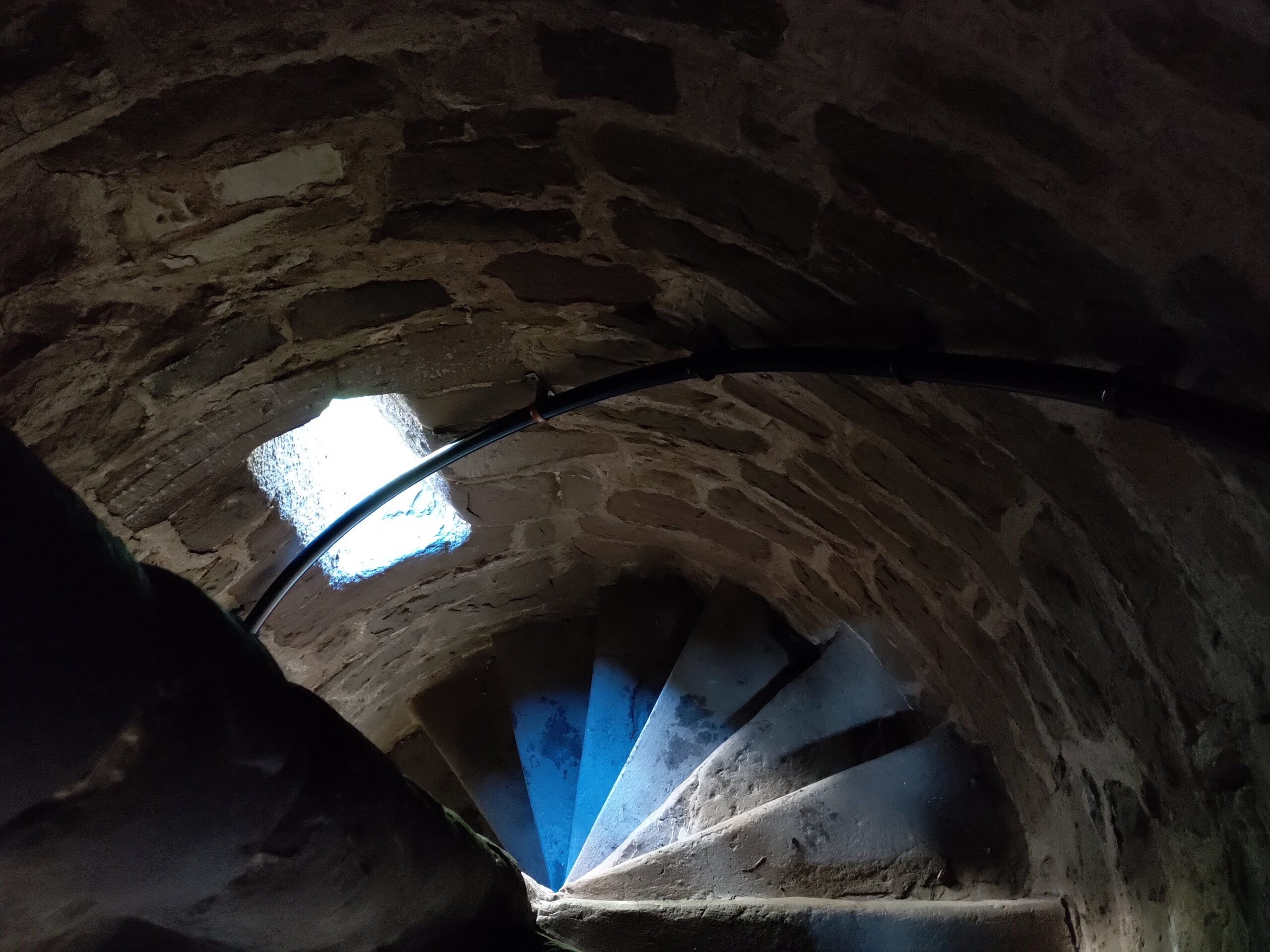
Ludlow Castle & The Mortimer Family
Ludlow Castle fell into the hands of the Marcher Lord, Roger Mortimer in 1301 when Roger married Geoffrey and Maud’s eldest granddaughter, Joan de Geneville. In approximately 1320, Roger constructed the Great Chamber block beside the existing Great Hall and Solar Complex and other domestic buildings.
Roger believed King Edward II to be incompetent and poorly influenced by his close friend Hugh Despenser the Younger. Roger joined the Earl of Lancaster in an unsuccessful rebellion in 1322 against Edward II. Roger was locked up in the Tower of London for taking part in the rebellion. Roger miraculously managed to escape his imprisonment and joined forces with King Edward II’s estranged wife, Isabella, in a successful revolt which saw Edward II being overthrown in 1327.
Roger Mortimer was made the Earl of The March and built a new Chapel in Ludlow Castle’s Outer Bailey which he interestingly dedicated to St Peter. St Peter’s Day just happens to fall on the same day that Roger escaped from the Tower of London.
In 1330 Roger’s new status was cut short when Edward III (Edward II’s son) had him executed for treason. Roger’s Widow was however allowed to retain Ludlow Castle.
Ludlow Castle continued to be passed down the Mortimer male heir line (with an occasional interruption when the crown took wardship briefly) until in 1425, Edmund Mortimer died childless and the castle passed to Edmund’s sister’s son, Richard 3rd Duke of York. In the 1450’s, Richard chose Ludlow Castle as his main residence along with his sons, including the future King Edward IV.

War of the Roses
During the War of the Roses (the bloody civil wars over the English crown between two royal families, the House of York and the House of Lancaster), Ludlow castle managed to avoid most of the warfare with the exception of the Battle of Ludford Bridge in 1459, which was fought just outside of Ludlow and resulted in the Lancastrians emerging victorious.
Richard was killed in 1460 at the Battle of Wakefield but his son, Edward managed to defeat the Lancastrians and became King Edward IV and made Ludlow the administrative centre of the Council of the Marches.
Edward chose Ludlow castle to be the residence for the upbring of his two sons, Edward and Richard. King Edward IV unexpectedly died in 1483 and his young son Edward was meant to be crowned but their uncle, Richard, Duke of Gloucester took them to the Tower of London where they vanished. What happened to the boys remains a mystery to this day.
Council of the Marches
Henry VII seized power in 1485 and became king of England. Henry also sent his eldest son, Arthur to be raised at Ludlow castle. In 1501, Arthur married Catherine of Aragon and they honeymooned at Ludlow castle. Sadly Arthur died the following year in 1502.
The Council of the Marches continued to operate and Henry VIII strengthened their powers, granting the Council the power to settle disputes and maintain general order effectively turning Ludlow castle into the capital of Wales.
By the 1530’s the castle was in need of restoration. The current president of the Council was Rowland Lee. Lee restored the castle and in 1552 built a prison and porter’s lodge in the outer bailey.
In 1560, Sir Henry Sidney was appointed president of the Council and extended the castle by building family apartments between the Great Hall and Mortimer’s Tower.
In the early 17th century the Council received much criticism over its legal practices and in 1641 its judicial powers were dismissed.
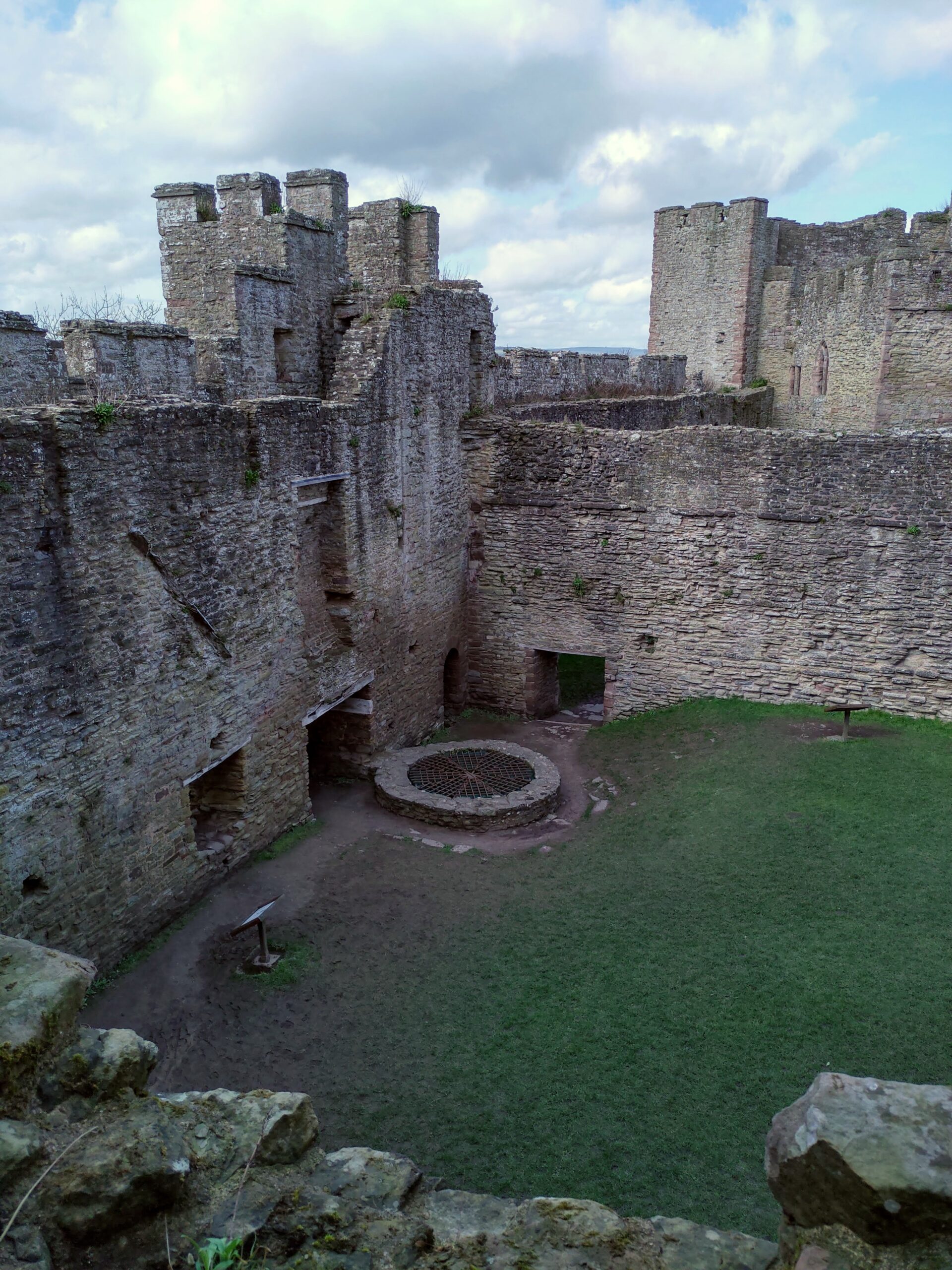

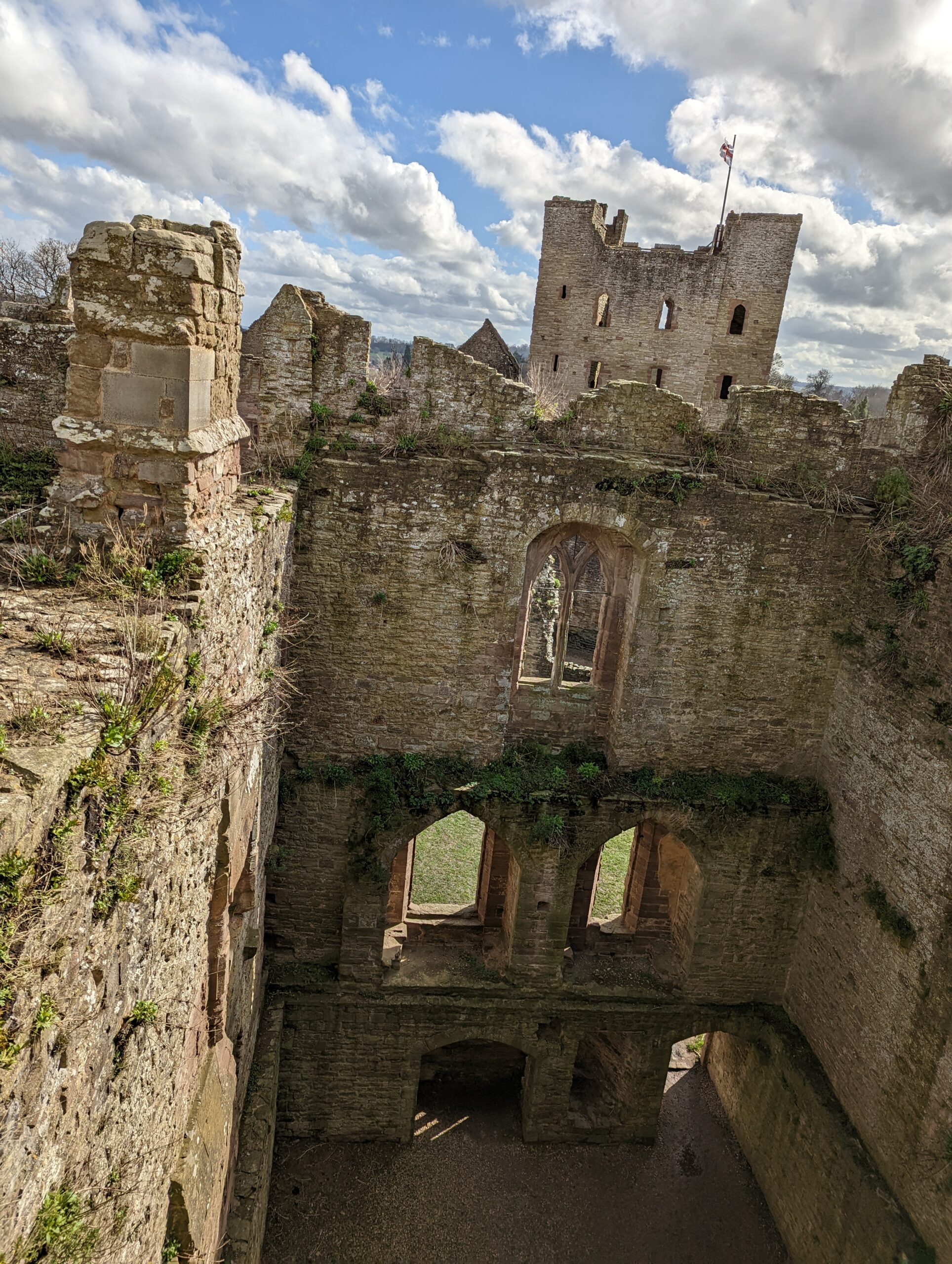
Civil War
When the English Civil war broke out in 1642, Ludlow supported the Royalists (supporters of King Charles I) over the Parliamentarians and a Royal garrison was established at Ludlow. The war turned in favour of the Parliamentarians and in 1646 Ludlow was besieged by a
Parliamentary force led by Sir William Brereton and Colonel John Birch. Ludlow was unable to withstand the siege and soon surrendered. Whilst Parliamentarian governors controlled Ludlow castle all valuable items were removed or sold from the castle.
King Charles II briefly reinstated the Council of the Marches in 1660 but the Council never regained its jurisdiction and was dissolved in 1689 which ended Ludlow Castle’s place in government.
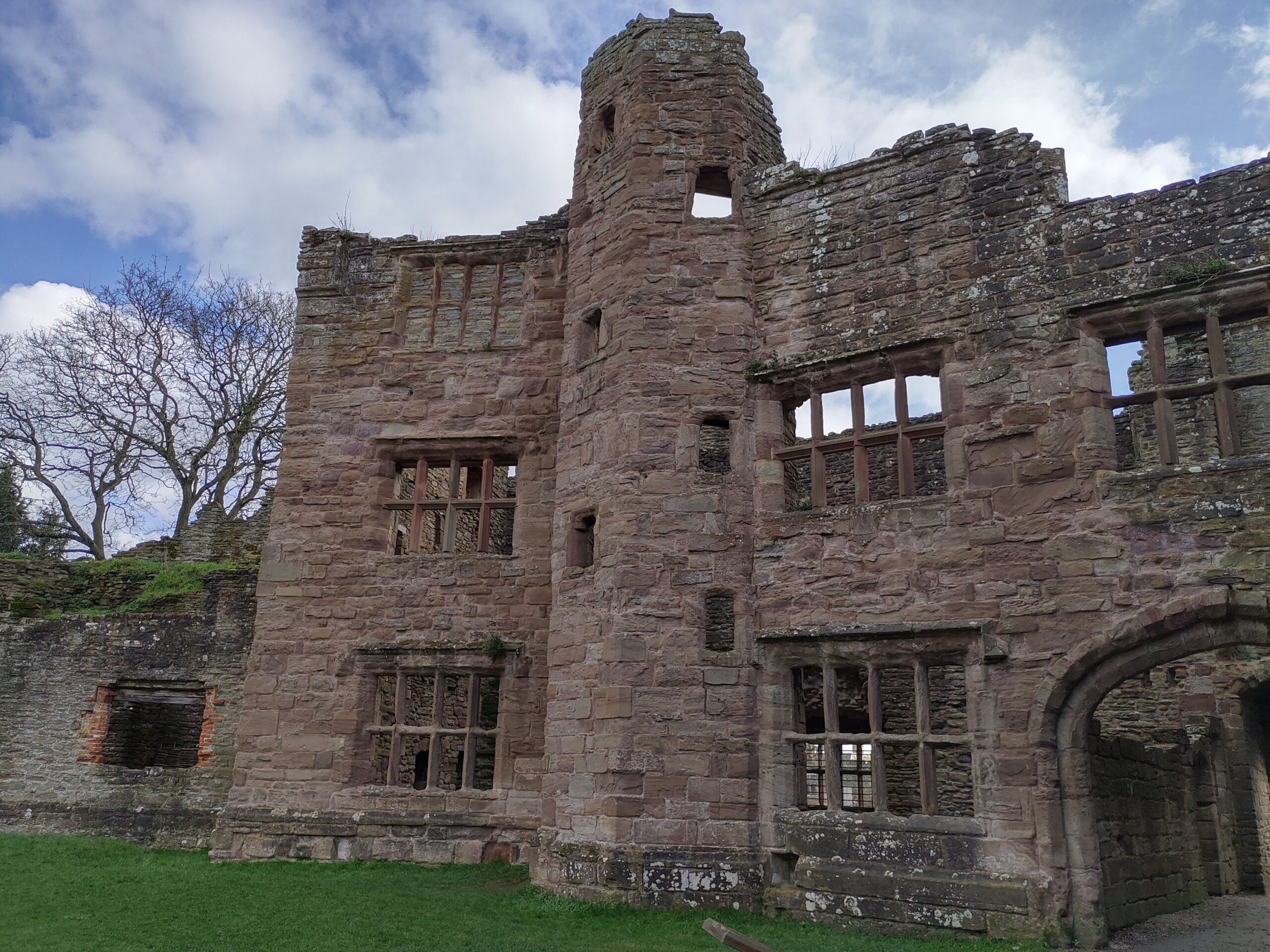
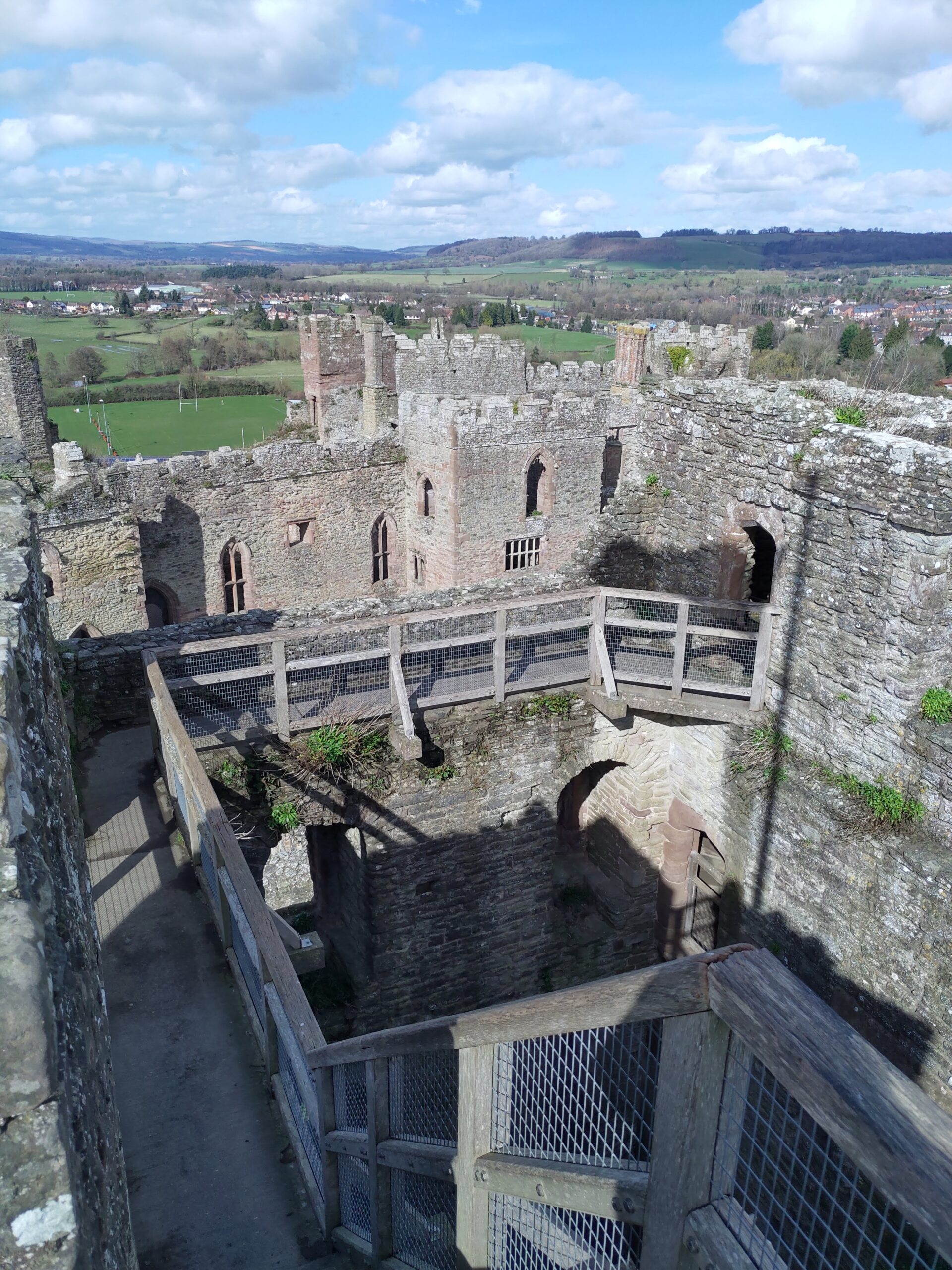

Forgotten
Following Ludlow castle’s loss of prestige the castle was left uncared for and soon fell into a state of disrepair. In 1704, the castle’s governor, William Gower even proposed dismantling the castle to make way for a residential square. Thankfully his proposal did not commence but the castle’s roof and much of its stone was looted for building materials.
New Lease of Life For Ludlow Castle
In 1811, Lord Clive, Earl of Powys bought Ludlow castle for £1560. In the 1820’s Clive built the grand Castle House in the outer bailey. During the Victorian era the castle became a popular tourist destination and the ivy that was growing over the stonework and causing damage was cut away.
The Powis estate retains ownership of Ludlow castle and with help from the English Heritage repair and maintenance work continues. Ludlow Castle is a Scheduled Monument and a Grade I listed building. The Castle is open to the public to visit for a small entrance fee.
Click here to read our blog post on visiting Ludlow Castle or watch our video below

